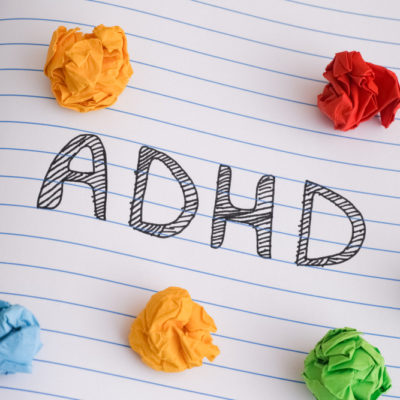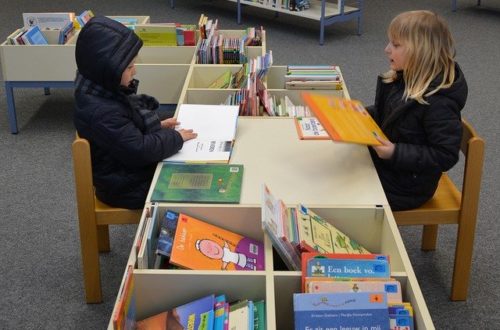A couple of weeks ago, I was talking to a colleague who teaches high school, and she told me about a recent incident that had left her thinking.
One of her students was enrolled in a dance class (in-school) that was holding an open house, and the student invited my colleague to attend. As my colleague watched the class, she became aware that the atmosphere was one of calm and focus. The students were disciplined and respectful, yet the teacher and students seemed relaxed, and the students were clearly enjoying the class.
My colleague was struck by the contrast between that atmosphere and the far more tense atmosphere of her own academic classes, in which she alternately had to plead with, threaten, and cajole students who consistently seemed surprised if not downright annoyed when she expected them to so much as pick up a pencil and copy a couple of sentences from the smart board.
How, she wondered, could this possibly be happening in the same school?
My colleague is a dedicated, experienced teacher whose former students (despite their high school grousing) regularly return from college and tell her how much they miss her class, and that their professors just don’t measure up.
It’s pretty fair to assume she isn’t the problem.
She did, however, have a theory about why students behaved so differently in the dance class than in her academic class.
In a dance class, she observed, students are trained to be disciplined. There is an expectation that they will show up, work hard, listen to their teachers, and conduct themselves in an orderly fashion. In the arts, that’s apparently still acceptable.
In their academic classes, in contrast, students have been trained to expect chaos. In fact, the more chaotic the classroom, the happier the administration is, and the higher the teacher’s ratings.
And by chaotic, I mean groups shouting over one another and students wandering in and out of the room while music plays in the background.
That’s obviously an extreme example (although a real one), and I’m not implying that every classroom across the country looks like that. But the fact that that sort of classroom could be held up as exemplary at a public school is by itself quite disturbing.
In that model, I suspect, chaos is seen as a sign of authenticity—an indication that students are learning naturally (the highest goal of education), without any of that boring, “rote” memorization stuff.
But given that, it’s no wonder students are taken aback when they’re asked to do serious work.
After writing about the way the line between normal academic struggles and actual learning disabilities has become increasingly blurred, I couldn’t help but think back on my colleague’s observations.
Although it’s easy to mock a certain type of overbearing, affluent parent who drags her children from specialist to specialist, doling out thousands of dollars for an Adderall prescription and a magical diagnosis that will result in extra time on the SAT or ACT, I think this scenario is in part the result of a system that pooh-poohs anything resembling the systematic acquisition of knowledge as too unbearably stodgy and old fashioned to even contemplate.
Twenty-first century skills anyone?
I think E.D. Hirsch has described the problem most accurately, so if you’ll humor me, I’m going to quote him at length here:
Beginning in the 1930s as part of the advance of progressive education in the public schools and the colleges of education, there were curriculum-revision movements across the land. Over the past six decades, such vague, gap-ridden “conceptual” curricula have been developed as a reaction to earlier, content-oriented approaches to forming a curriculum. The new curricula have attempted to get beyond the “rote learning” of “mere facts,” and to gain unity and conceptual depth by following broad and deep instructional aims. But…[e]ven the best local guides of this type have fundamental weaknesses.
The first inherent weakness is the arbitrariness of the large-scale conceptual schemes and classifications that make up all such curricular “strands” and “objectives.” Such schemes may appear to be deep and comprehensive, but most of them are indeed quite arbitrary…
These general objectives do not compel either a definite or a coherent sequence of instruction. That is because the large conceptual scheme and its concrete expressions (through particular contents) have a very tenuous and uncertain relationship to each other. A big scheme is just too general to guide the teacher in the selection of particulars. For instance, on multiyear science objective in our superior local district states, “Understand interactions of matter and energy.” This is operationally equivalent to saying, “Understand physics, chemistry, and biology.” The teachers who must decide what to include under such “objectives” are given little practical help. (The Schools We Need, 30)
And furthermore:
Guidelines developed in multiyear units are ineffective in practice because children change teachers in successive years. Vague, multiyear goals make neither the student nor the teacher responsible for gaps; a gap is always something that should have been filled in some other year! (TSWN, 28)
The inevitable result of a system that so utterly disdains coherence is that students learn things haphazardly, in dribs and drabs, without sufficient reinforcement and often based on the presumption of background knowledge they do not actually possess.
Exceptionally bright and motivated students may indeed absorb much of what they need to know naturally, as may children of highly educated parents who regularly discuss academic topics at home. Unfortunately, these groups are the exception rather than the rule.
When I first started tutoring, I was taken aback when students told me that they’d learned more about grammar in a two-hour session than they had in the previous decade of English class. (I’m not saying that as a humblebrag, by the way—I was basically just imitating what my teachers had done with me. Back then, I didn’t know it was possible to teach any other way!)
I might have been a novice, but it seemed to me even then that there was something really very wrong with the whole picture.
It was only when I discovered Hirsch that I found an explanation for the often bizarre knowledge gaps I kept encountering in very bright students. So to be clear, I didn’t start out as some sort of ideologue—Hirsch’s work provided the only plausible explanation consistent with what I was actually experiencing on pretty much a daily basis.
I also started to understand why everyone was so baffled about that state of affairs.
Because “natural” learning is (erroneously) held up as the norm, when students start to fall off track academically, the usual assumption is that there’s something wrong with the student. It doesn’t occur to anyone to look at the larger system.
In addition, many parents—even highly educated ones—are unaware of the extent to which schools have changed since they graduated. They assume that their children are being taught largely the same way they were taught; since they came out okay, their assumption again is that their child’s difficulties must be due to a problem unique to that child. (When a current classroom teacher first attempted to enlighten me about how school had changed in the decade or so since I had graduated from high school, I initially did not believe her. I was only forced to accept that she was telling the truth because it explained so much of what I was seeing as a tutor. )
From what I’ve observed, the result is a glut of average to well-above-average students with academic deficiencies that two or three decades ago would have been suggestive of a genuine learning disability, but that today would likely not exist were those students exposed to a more systematic and coherent curriculum.
But unfortunately curriculums are incoherent, and students who are exposed to that type of incoherence over a period of years will inevitably become anxious and overwhelmed, have difficulty focusing and absorbing information, and develop odd gaps in their knowledge. To be clear, this is not something that any individual teacher can realistically be expected to compensate for, particularly at the high-school level. By then, a lot of the damage has already been done.
It would be remarkable if there weren’t an explosion in learning disability diagnoses, IEPs, extra time requests, etc.
But as Hirsch describes, the American approach to education has been incoherent for decades. So why the surge in learning problems now, especially among affluent children?
Technology is one obvious factor. Granted my expertise in neuroscience is limited, but having seen what the internet and my smartphone have done to my own attention span, I can barely begin to fathom the effects on the developing brain.
An increased willingness to diagnose/medicate problems is presumably another large factor.
I think there are some other things at work here, however.
Part of the issue, I suspect, is the difference between the types of teachers who populated classrooms a few decades ago, and the types of teachers more likely to be teaching today.
When I was in high school, during the mid-late ‘90s, the majority of my teachers were 30-year veterans who had begun teaching in the mid-1960s. Even if progressive strains of the sort Hirsch describes were already an established feature of American education, their excesses were held in check by more traditional norms.
Clearly, none of my teachers had ever been encouraged to think of him- or herself as a mere facilitator. Bearded ex-hippie or gray-suited Reaganite, they were experts in their subjects and were committed to helping their students acquire a broad body of subject-specific knowledge. Their lessons were coherent, sequential, and cumulative, and they lectured shamelessly.
Their assignments certainly involved significant amounts of what would today be termed “critical thinking,” but they also believed in the importance of facts, and neither they nor the administration (largely made up of veteran educators) thought or spoke in the kind of buzzwords/edu-jargon that has come to predominate in discussions about education today. Indeed, they would have snorted with derision at such language.
A lot has obviously changed since then.
The implementation of No Child Left Behind in 2000 and the shift to an obsessive focus on standardized testing coincided with the retirement of the type of veteran teachers I had (the oldest baby boomers or pre-boomers).
The younger teachers who replaced them, and are continuing to replace them, were themselves more likely to have been products of the incoherent system Hirsch describes, and to accept the standardized testing regime and edu-drivel as normal. Among them are genuinely well-meaning teachers who truly believe that in some hazy, unspecified past, all learning was acquired by “rote,” and who are sincerely unaware of the connection between background knowledge and reading comprehension. (I’ve met some of them, and they are genuinely naive about that relationship. Well-meaning people can do an awful lot of damage.)
At the same time, just as the top and the bottom Americans have moved away from each other economically, they have moved away from each educationally as well. The result is an increasingly polarized system that advances two frequently opposing—but in some ways equally damaging—educational philosophies, which in turn correspond to two of the biggest weaknesses Hirsch has identified in the American education system.
At one extreme, mostly disadvantaged students are offered no-excuses schools that focus almost exclusively on formal skills (e.g. identifying main ideas, “inferencing,” annotating). Because subjects such as science, history, and foreign languages, unlike English, are not covered on state tests (which determines school rankings and teacher evaluations), those subjects are either scaled back or cut entirely.
Ironically, in the name of raising reading scores, schools are depriving students of the exact knowledge they need to become better readers. (Thank you, Common Core!)
At the other extreme, schools that educate highly affluent students tout their progressive credentials as a means of differentiating themselves from the masses: education is “hands-on,” “student-centered,” “discussion-based,” “social-emotional,” etc.
In reality, that often means an equally incoherent curriculum in which students spend their time talking in small groups and doodling on ipads, or sitting around seminar tables play-acting at being graduate students and pontificating about subjects they have little real understanding of, while teachers act as “facilitators.”
Students in this group might appear to be doing sophisticated work, but more often than people tend to realize, they’re shaky on the fundamentals. The gaps created by this type of education are less likely to be noticed for the simple reason that affluent parents can hire tutors to plug them. Having been one of those tutors hired to plug many such gaps, I can attest firsthand to the existence of this phenomenon.
There might still be a middle ground somewhere in the U.S. that vaguely resembles what used to be known simply as “school,” but if it still exists, it’s probably on its way out.
Pretty much the only thing everyone agrees on is that more technology is always better.
Either way, rich or poor, the result is smart kids with big, weird gaps in their basic knowledge. Kids who don’t know what a priest is, or what “comprehensive” means, or that authors can discuss ideas without agreeing with them.
Sooner or later, almost everyone is going to need accommodations. In fact, why not just extend regular time by 50% and be done with it?





